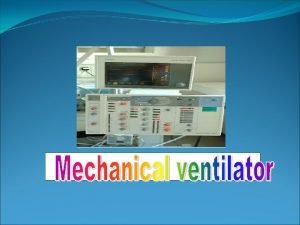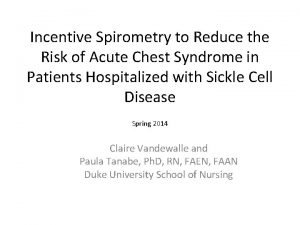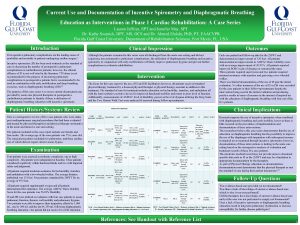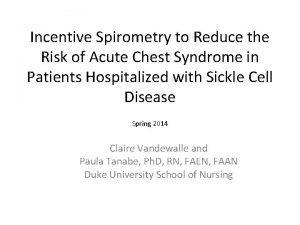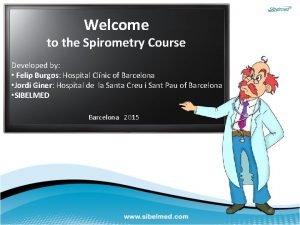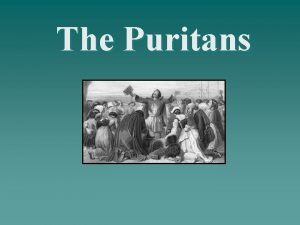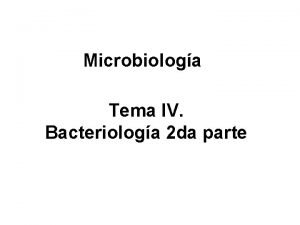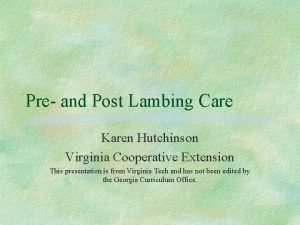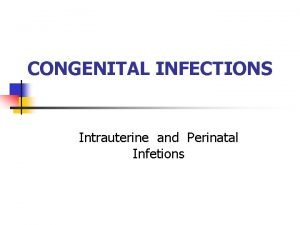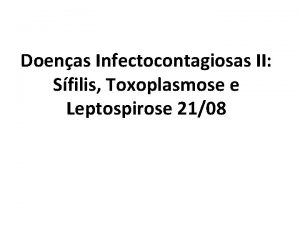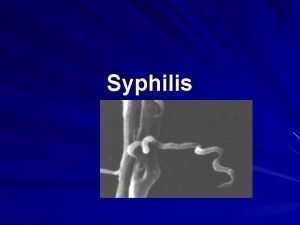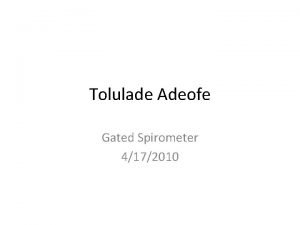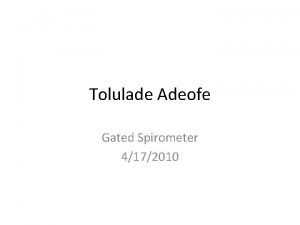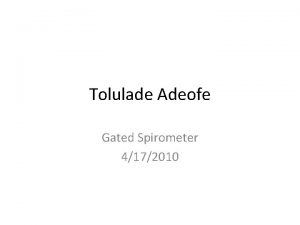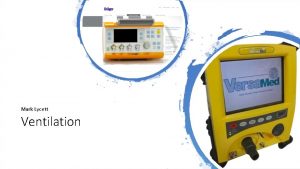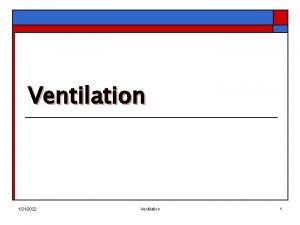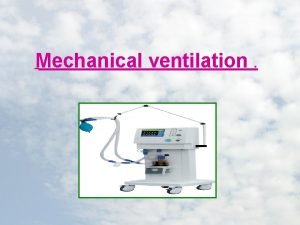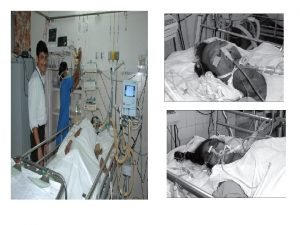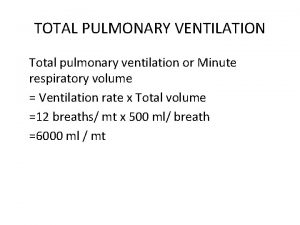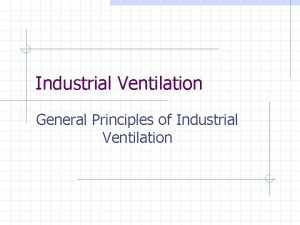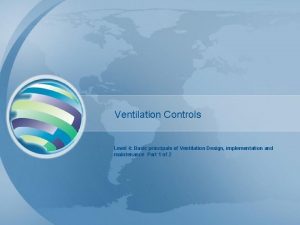The inventor of spirometer John Hutchinson 1846 Ventilation













































- Slides: 45


The inventor of spirometer: John Hutchinson (1846)

Ventilation and V/Q ratio

Branching of the airways

Static lung volumes IC

Slow (SVC) and forced (FVC) vital capacity in health and disease

Elastic forces and airway diameter

Antropometric data determine reference values -Age -Height -Sex - Race

Spirogram and flow-volume loop

Asthma - reversible airway obstruction spirogram FVC: 2. 4 (73 ref%) – 3. 1 (92 ref%) FEV 1: 1. 0 (36 ref%) – 1. 5 (52 ref%) FEV 1/FVC: 42% - 49% F-V loop

COPD = postbronchodilator FEV 1/FVC<70% (irreversible airway obstruction

Lung fibrosis FVC: 75 ref% FEV 1: 78 ref% FEV 1/FVC: 87% TLC: 63 ref% RV: 57 ref% DLCO: 34 ref%

Heart failure FVC: 55 ref% FEV 1: 49 ref% FEV 1/FVC: 74%

Typical spirograms and flow-volume loops

Etiology of obstructive and restrictive ventilatory disorders

Pathophysiology of the variable lesion of the major (proximal) airways

Typical F-V loops in cases of lesions of the major airways



Flow-volume loops A: normal, B: obstructive, C: restrictive

Inhalative provocation test with metacholin

Asthma – reversible obtruction healthy asthmatic

COPD

COPD (emphysema!!!)

Lung fibrosis

Use of spacer with MDI

How to measure FRC (RV, TLC) ? • Nitrogen washout method • Inert gas dilution technique • Plethysmography





Resistance

Volume dependence of airway resistance (Raw) RV SRaw (cm. H 2 O/L/sec) 4 3 2 1 TLC 0 2 4 6 Lung Volume (liters) 8

Compliance


Diffusion capacity (DLCO, DLCO/VA, Tco, Kco)



Arterial Blood Gas

Respiratory and metabolic shifts chronic acute chronic

Exercise tests in lung diseases 1. Exercise-induced asthma (EIA) - FEV 1 2. Interstitial lung disease (ILD) - SAT 3. Exercise tolerance in rehabilitation (COPD) cardiopulmonary exercise (CPX). Important variables: - work rate (watts), Sp. O 2, ABG - VO 2, VCO 2, RQ, VE - lactate threshold (LT) - breathing reserve (1 -VEmax/MVV) - heart rate reserve (1 -HRmax/220 -age)

Mechanism of exercise-induced Hypoxaemia (decreased contact time)



Noninvasive determination of lactate threshold by the V(entilatory)-slope method
 Spirometer inventor
Spirometer inventor Mode of ventilation
Mode of ventilation Incentive spirometer documentation
Incentive spirometer documentation What is normal incentive spirometer reading
What is normal incentive spirometer reading Expiratory volume
Expiratory volume Incentive spirometer documentation
Incentive spirometer documentation Rationale for using incentive spirometer
Rationale for using incentive spirometer Bell spirometer
Bell spirometer Spirometer working principle
Spirometer working principle John purdy folding chair
John purdy folding chair Frederick j loudin keychain
Frederick j loudin keychain Cottage industry
Cottage industry Din en 1846-1
Din en 1846-1 En1846
En1846 1846
1846 The oregon treaty of 1846
The oregon treaty of 1846 Eli whitney
Eli whitney Emily bronte remembrance poem analysis
Emily bronte remembrance poem analysis Anne hutchinson and roger williams
Anne hutchinson and roger williams Anne hutchinson and roger williams
Anne hutchinson and roger williams Triada de hutchinson
Triada de hutchinson Ewecare
Ewecare Thanksgiving point dinosaur museum
Thanksgiving point dinosaur museum Erytromicyn
Erytromicyn Concrecencia
Concrecencia Embedded tooth
Embedded tooth Hutchinson incisors and mulberry molars
Hutchinson incisors and mulberry molars Bryce hutchinson wikipedia
Bryce hutchinson wikipedia Bill hutchinson afl
Bill hutchinson afl Pastias lines
Pastias lines Facies esclerodermica
Facies esclerodermica Scarlet letter chapter 1-12 summary
Scarlet letter chapter 1-12 summary Protozoal keratitis
Protozoal keratitis Kendall hutchinson
Kendall hutchinson Sifilis secundaria
Sifilis secundaria Angela dragone
Angela dragone Anne hutchinson 1637
Anne hutchinson 1637 Wernickes hemianopic pupil
Wernickes hemianopic pupil Vivian hutchinson
Vivian hutchinson Sinal de wimberger
Sinal de wimberger Hutchinson's triad
Hutchinson's triad Fecboak
Fecboak Các châu lục và đại dương trên thế giới
Các châu lục và đại dương trên thế giới Thế nào là hệ số cao nhất
Thế nào là hệ số cao nhất Hệ hô hấp
Hệ hô hấp Tư thế ngồi viết
Tư thế ngồi viết

